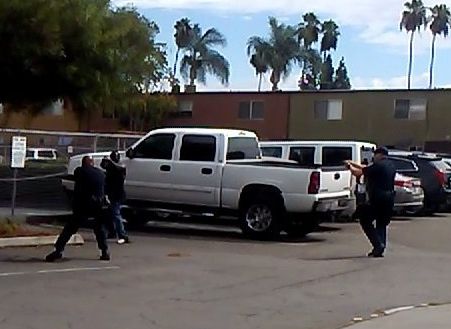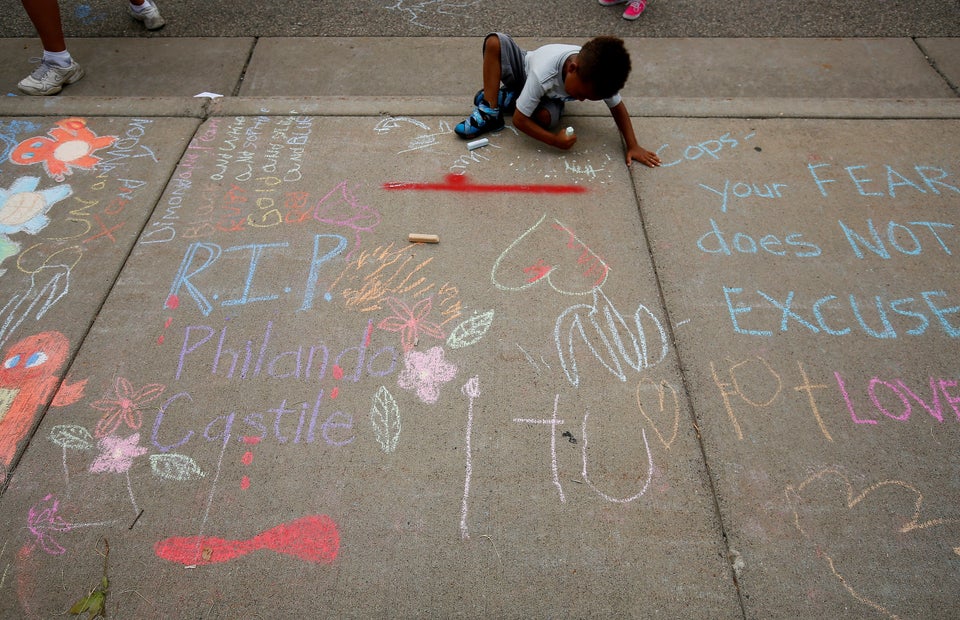EL CAJON, Calif. - Protesters yelled “murder” and demanded on Wednesday a federal investigation after an unarmed black man in Southern California was shot and killed, just as racially charged anger over two similar incidents during the past two weeks had begun to subside.
Tuesday’s mid-afternoon shooting unfolded after two officers responded to several calls about a mentally unstable person walking in traffic and confronted the man behind a restaurant in the San Diego suburb of El Cajon, according to local police.
One policeman opened fire with his service pistol and his partner simultaneously fired a Taser stun gun when the man pulled an object from his pants pocket and took aim at them in a “shooting stance,” according to police. No weapon from the man, however, was recovered from the scene, police said.

The object was later identified by police as a silver vape smoking device.
Police identified the victim as Alfred Olango, a resident of El Cajon. Friends and supporters said Olango, age 38, according to court records, was mentally ill and may have been suffering a seizure in the moments before his death.
Police said they obtained cellphone video of the shooting from a bystander, but authorities released only a still frame showing two officers pointing weapons at a man who was aiming an object at them.
In a separate video clip taken moments after the shooting and posted on social media, a woman who refers to herself as the victim’s sister is heard crying in anguish, “Oh my God. You killed my brother. I just called for help and ... you killed him.”
Mayor Bill Wells told a news conference that he had seen the footage obtained by police. He described it as “certainly enlightening,” adding, “I don’t believe that this is going to be a tremendously complicated process for people to figure out what happened.”
“I saw a man who was distraught, a man who was acting in ways that looked like he was in great pain, and I saw him get gunned down and killed, and it broke my heart. If it was my son I would be devastated,” Wells said.
Wells said all 120 officers on El Cajon’s police force receive training from San Diego County’s Psychiatric Emergency Response Teams program, or PERT, but neither officer involved in Tuesday’s shooting was assigned to it. Police earlier said the officer who fired his Taser had worked frequently with PERT.
CRIES FOR ‘JUSTICE’
The shooting came days after two black men were killed by police under questionable circumstances in Charlotte, North Carolina, and Tulsa, Oklahoma, igniting demonstrations decrying racial bias by U.S. law enforcement.
The Charlotte shooting sparked a week of sometimes violent protests, prompting authorities there to impose a state of emergency and curfew.
Speaking to reporters on Wednesday, El Cajon Police Chief Jeff Davis appealed for calm. The predominantly white city is home to some 100,000 people, including many residents who are immigrants from the Middle East and Africa.
“I implore the community to be patient with us, work with us, look at the facts at hand before making any judgment,” he said.
Civil rights activists and several hundred protesters gathered outside the police department, where they chanted “murder,” “justice for Alfred Olango” and “black lives matter.”
Some then broke off and marched toward the scene of the shooting, joined by more demonstrators, as the swelling crowd stopped at times to block traffic.
“We are not going to stop until we get justice,” the Reverend Shane Harris, president of the National Action Network’s San Diego chapter, said at the demonstration. “We do not trust local prosecutors to investigate local police.”
“Mr. Olango was killed for three strikes against him. The first strike, being black. The second strike, being mentally ill. The third strike, not following orders,” community activist Christopher Rice-Wilson said.
Federal court records show that Olango had a troubled past, fleeing to the United States from Uganda with his parents and eight brothers and sisters in 1991 because the east African country’s then-president, for whom Olango’s father worked, had threatened to kill the family.
According to court documents from 2006, he was granted permanent U.S. residency but lost that status in 2001 after being convicted of drug charges. As of 2006, records showed, a deportation order against him was still pending.
Wells said it would be up to county prosecutors who are investigating the shooting to release video as they see fit. He said the FBI also was probing the incident.
(Additional reporting by Laila Kearney in New York, Brendan O’Brien in Milwaukee and Alex Dobuzinskis; Writing by Steve Gorman; Editing by Raissa Kasolowsky, Jeffrey Benkoe and Bernard Orr)

